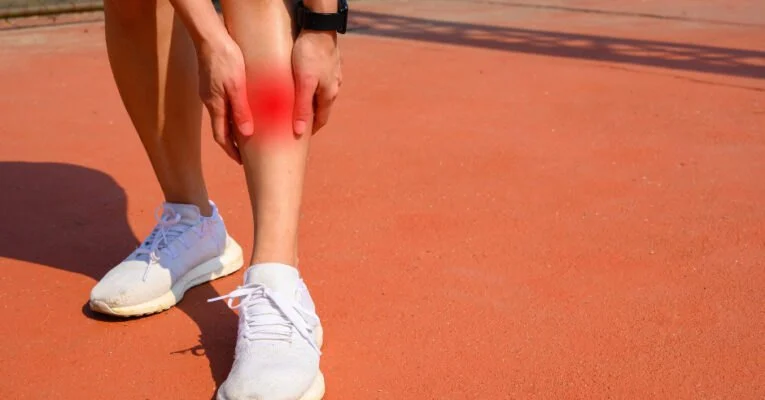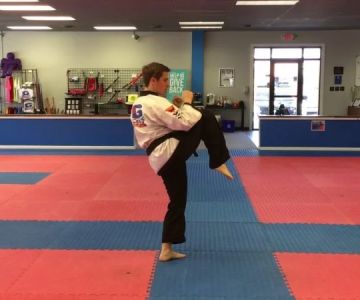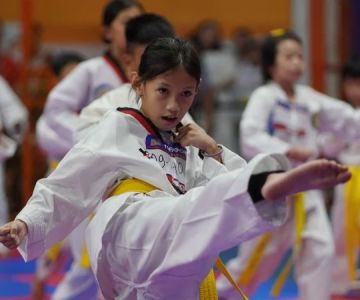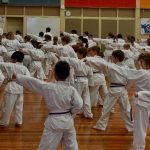
- 1 - Understanding Shin Splints
- 2 - Causes of Shin Splints in Tae Kwon Do
- 3 - How to Prevent Shin Splints
- 4 - How to Treat Shin Splints
- 5 - When to Seek Medical Help
1 - Understanding Shin Splints
Shin splints, also known as medial tibial stress syndrome, is a common injury for athletes, especially for those involved in high-impact sports like Tae Kwon Do. This condition occurs when the muscles and tendons around the shinbone become inflamed due to repetitive stress or overuse.
In Tae Kwon Do, the combination of jumping, kicking, and quick changes in direction can put extra strain on the shins, leading to pain and discomfort. Understanding the causes and symptoms of shin splints is the first step in preventing and treating them effectively.

United Martial Arts Centers Warwick / umac warwick ny
43 West St, Warwick, NY 10990, USA
2 - Causes of Shin Splints in Tae Kwon Do
Several factors can contribute to the development of shin splints in Tae Kwon Do athletes:
2.1 Overuse and Repetition
Repetitive actions, such as kicking or running, especially on hard surfaces, can cause stress on the shin muscles, leading to inflammation. If your training regimen is too intense without proper rest, you are at a higher risk.
2.2 Poor Footwear
Wearing shoes that lack proper arch support or cushioning can contribute to shin splints. Inadequate footwear increases the impact on your legs during training, exacerbating the strain on your shins.
2.3 Sudden Increase in Intensity
Jumping into high-intensity training too quickly, without gradually building up strength and endurance, can overwhelm your muscles and tendons, resulting in shin splints.
2.4 Incorrect Technique
Incorrect kicking techniques, or improper foot positioning during certain Tae Kwon Do movements, can lead to extra stress on the shins. Proper form is crucial in preventing these types of injuries.
3 - How to Prevent Shin Splints
Preventing shin splints is essential for every Tae Kwon Do athlete. Implement these strategies to protect your legs and ensure a safe and effective training regimen.
3.1 Warm-Up and Cool Down Properly
Begin each training session with a proper warm-up to increase blood flow to your muscles and prepare them for physical activity. Afterward, cool down by stretching your shins and calves to reduce muscle tension.
3.2 Gradually Increase Intensity
If you're new to Tae Kwon Do or returning after a break, slowly increase the intensity of your training to allow your body to adapt. This gradual buildup helps avoid overloading your muscles and tendons too quickly.
3.3 Wear Proper Footwear
Invest in well-cushioned, supportive shoes that are designed for high-impact sports. Proper footwear will reduce the stress on your shins and help absorb impact during training.
3.4 Practice Proper Technique
Ensure that you are using the correct techniques for kicks, stances, and foot positioning. Work with a qualified instructor to ensure your movements minimize strain on your legs and promote efficient movement.
3.5 Cross-Train to Build Leg Strength
Incorporate strength training exercises that target your lower legs to build muscle and prevent injury. Exercises like calf raises, squats, and leg presses can help improve your muscle strength and endurance, reducing the risk of shin splints.
4 - How to Treat Shin Splints
If you are already experiencing shin splints, follow these treatment methods to alleviate pain and promote recovery.
4.1 Rest and Reduce Activity
The first step in treating shin splints is to rest. Reduce or stop high-impact activities that aggravate your condition, such as kicking or running. Allow your shins to heal before resuming intense training.
4.2 Ice Therapy
Apply ice to the affected area for 15-20 minutes several times a day to reduce inflammation and pain. Be sure to wrap the ice in a cloth or towel to prevent direct contact with your skin.
4.3 Stretch and Strengthen
Gently stretch your calves and shins to relieve tension and increase flexibility. Strengthening exercises for the lower legs can also help speed up recovery and prevent future injuries.
4.4 Use Anti-Inflammatory Medications
Over-the-counter anti-inflammatory medications, like ibuprofen, can help reduce swelling and pain. However, consult with a doctor before using any medication regularly.
5 - When to Seek Medical Help
In some cases, shin splints can develop into more severe conditions, such as stress fractures. If you experience persistent pain that doesn’t improve with rest, or if the pain becomes unbearable, it is essential to consult a healthcare professional for further evaluation and treatment.
At Jeuns TKD Hub, we understand the importance of injury prevention and recovery for Tae Kwon Do athletes. If you're experiencing shin pain, don't hesitate to consult a doctor or physical therapist to get personalized treatment plans and ensure a quick recovery.








 Rodriguez Taekwondo4.0 (29 reviews)
Rodriguez Taekwondo4.0 (29 reviews) Genbukan Kobushi Dojo5.0 (16 reviews)
Genbukan Kobushi Dojo5.0 (16 reviews) Tigereye TaeKwonDo, Inc.5.0 (20 reviews)
Tigereye TaeKwonDo, Inc.5.0 (20 reviews) Colorado Martial Arts Academy5.0 (27 reviews)
Colorado Martial Arts Academy5.0 (27 reviews) Double Dragon Tang Soo Do4.0 (138 reviews)
Double Dragon Tang Soo Do4.0 (138 reviews) Steve Fisher Karate Studio5.0 (7 reviews)
Steve Fisher Karate Studio5.0 (7 reviews) How to Execute a Jumping Roundhouse Kick to the Head
How to Execute a Jumping Roundhouse Kick to the Head How to Execute a Double Kick Combination in Sparring
How to Execute a Double Kick Combination in Sparring How to Perform a Flawless Axe Kick: A Step-by-Step Guide
How to Perform a Flawless Axe Kick: A Step-by-Step Guide DIY Tae Kwon Do Training Equipment for Home Practice
DIY Tae Kwon Do Training Equipment for Home Practice How to Increase Your Vertical Jump for Tae Kwon Do Flying Kicks
How to Increase Your Vertical Jump for Tae Kwon Do Flying Kicks The History of the Tae Kwon Do Peace Corps
The History of the Tae Kwon Do Peace Corps